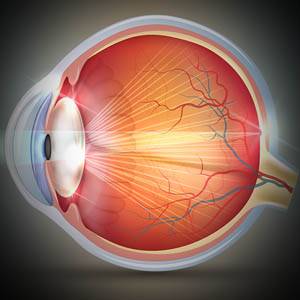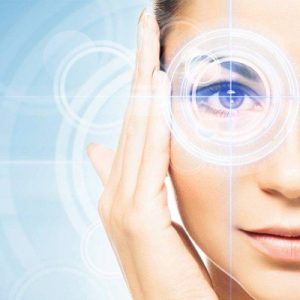Eyes are known as the ‘windows to your soul’, but they are the window to your health as well.
According to Eye-Q, over 20% of Americans say an eye doctor detected a health issue – not related to the eyes.
A recent study performed by Optum, found that early signs of chronic disease can be identified through comprehensive eye exams by eye care practitioners.
Diseases such as diabetes, high cholesterol, heart and vascular diseases, and even some forms of cancer could be detected during an eye exam.
If you haven’t visited your eye doctor recently now is the time.
Eye and your health
Eye exams can reveal more than just eye health.
During an eye exam, eye doctors may detect general health conditions early. Detecting any condition early on allows for improved and faster outcomes.
Here’s a list of how eyes can be a window to your health;
1. Diabetes
Diabetes can cause damage to the blood vessels of the body and in the retina, the eye exam can reveal signs of Diabetic Retinopathy (DR) and Diabetic Macular Edema (DME).
During an eye exam, the eye doctor can detect leaked blood or plasma from damaged vessels in the eye. The eye doctor will then either monitor this condition or may refer the patient to doctors such as an endocrinologist or vascular surgeon.
Today eye dosctors use advanced technologies such as digital retinal exams and OCT scanners. The earlier diabetic eye disease is diagnosed and managed, the better the chances are of preserving eyesight.
2. Brain cancer & stroke
Certain brain cancers and strokes can affect the appearance of the blood vessels in the eye.
During an eye exam, an eye doctor can occasionally detect an issue taking place in the brain by examining the blood vessels in the eyes.
If shadows or swelling in the eye is detected, it may indicate a serious condition in the brain, like a tumor, or clots that might result in a stroke.
3. Hypertension
The shape and appearance of the blood vessels in the back of the eye can be a sign of high blood pressure.
Hypertension can be detected during an eye exam, sometimes even before it’s diagnosed by your regular doctor. The damaged blood vessels lead to hemorrhages, leaking, and swelling — all of which can be observed in the eyes.
According to the Center for Disease Control (CDC), hypertension the “silent killer” affects nearly 1 in 3 adults, however up to 20% of those people don’t even know they have it!
Early detection of the signs of hypertension at an eye doctor’s evaluation can truly be life-saving.
The Find an Eye Doctor directory provides a list of eye doctors near you that can conduct an eye exam and possibly detect any early signs of other serious health issues.
SEE RELATED: 15 Actions that Impact Your Eye Health
4. High cholesterol
High cholesterol is among the easiest conditions to spot during a complete eye exam.
Eye exams can detect a buildup of cholesterol, as cholesterol deposits can manifest on the front of the eye, appearing as a gray, thin ring on the iris, called arcus senilis.
This ring tends to appear with age, and it is also more common in people with high blood cholesterol levels.
High cholesterol can also be detected in the retina by assessing vein and artery patterns. These deposits may indicate the current or future development of Retinal Blood Veinl Occlusion (BRVO), a condition where blockages restrict blood flow to the back of the eye, causing temporary or permanent vision loss.
5. Heart conditions
Deposits that clog the arteries in the eye can be a sign of some heart conditions associated with a buildup of plaque in the carotid artery in the heart.
If an optometrist detects such changes to the vascular structure at the back of the eye, they will typically refer you to see a medical specialist.
6. Inflammation
Systemic conditions that are associated with inflammation in the body can have an inflammatory effect on the eyes.
Uveitis, for example, causes eye inflammation, redness, and blurred vision, and tends to occur in people with lupus, rheumatoid arthritis, and other autoimmune diseases.
7. Thyroid
Thyroid disease can make itself apparent through the eyes in several ways. The thyroid gland controls the hormones that regulate tear production which can cause dry eye syndrome.
Additionally, an overactive thyroid (hyperthyroidism) can enlarge and stiffen the extraocular muscles, causing bulging eyes— an indicator of Graves’ disease.
8. Cancer
Various cancers can be found during a detailed eye exam, in particular, the skin surrounding the eyes are prone to sun damage.
Skin cancers can affect the eyelids and outer surfaces of the eye. The most common types of skin cancers are basal cell, squamous cell, and melanoma.
Leukemia, lymphoma, and other forms of cancer can also affect the interior parts of the eye. Tumors in the breast and other areas can spread to the ocular structures.
9. Multiple sclerosis (MS)
Sudden vision loss may be attributed to Multiple Sclerosis (MS).
While an optometrist can recognize signs indicating the presence of MS, such as the color and appearance of the optic nerve, these cases will be referred for further testing to confirm the diagnosis.
An eye exam could change your life
If you haven’t been to your eye doctor recently, it is recommended to schedule an eye exam, this may just detect an underlying condition that you were unaware of.
Since so many different health conditions can be detected during an eye exam, it is important to visit your eye doctor regularly.
LEARN MORE: Guide to Eye Health
If you haven’t been to the eye doctor this year, contact an eye doctor near you to schedule an appointment, they may even save your life.










